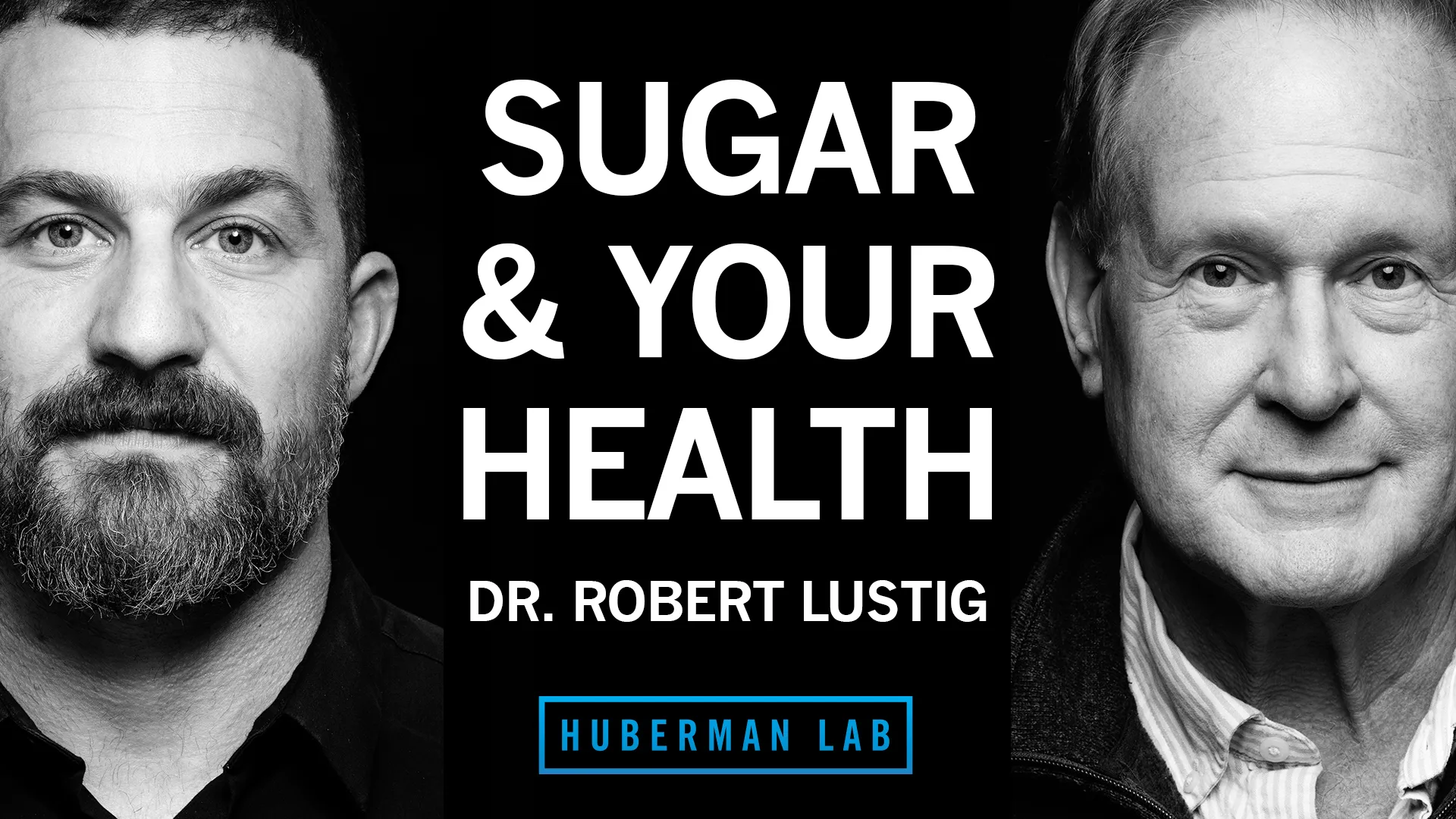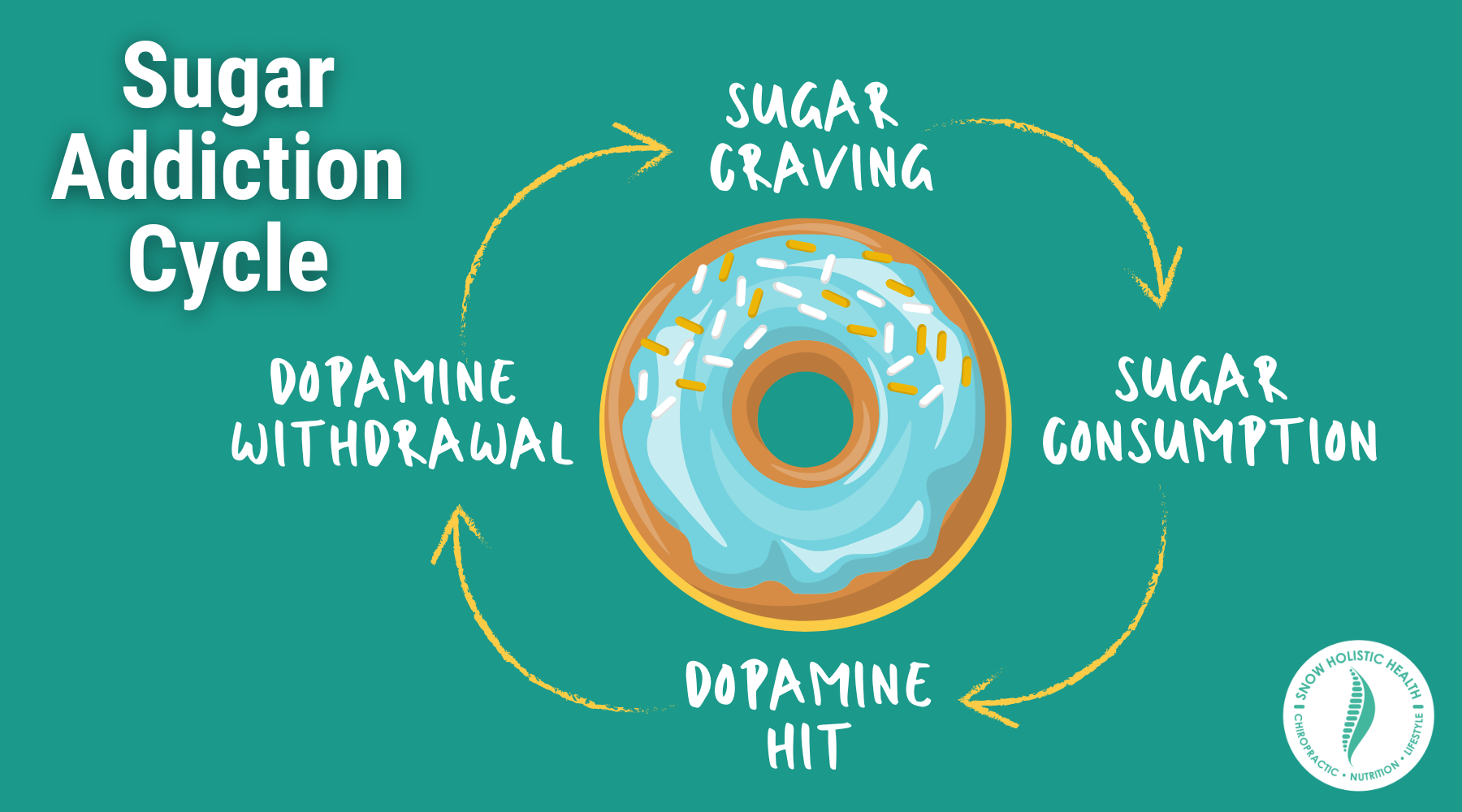ACTION PLAN: Dr. Robert Lustig on the Huberman Lab

This week, we listened to the Huberman Lab with Dr. Robert Lustig, M.D., neuroendocrinologist, professor of pediatrics at the University of California, San Francisco (UCSF), as he discussed how sugar and processed foods impact your health. You can watch the entire conversation below.
In this article, we’ll review the major takeaways and how you can put Dr. Lustig’s advice into action.
1. "A calorie is not a calorie"
When we talk about weight loss, we are often confronted with the Calorie In, Calorie Out (CICO) model of energy expenditure. However, as Dr. Lustig says, “A calorie is not a calorie” –but what does that mean exactly?
Macronutrients
Many of us are already familiar with the concept of macronutrients–that is, the difference between carbohydrates, fats, and protein, and how our body processes them. But what we often leave out of the equation is how these macronutrients are packaged together within the foods we eat.
Fiber and Our Microbiome
Dr. Lustig cites almonds as an example: a handful of almonds contains roughly 160 calories, mostly from healthy (polyunsaturated) fats. However, in the process of digestion, approximately 30 calories, largely derived from fiber, is taken up by beneficial bacteria in our guts.
Compare this to the caloric value of a can of soda, which is both nutrient-poor, and fiber-poor. Now, the soda might contain the same number of calories as the almonds, but in the process of digestion, little to no nutritional value is taken up by our gut bacteria (in fact, large quantities of sugar can be toxic to our microbiome).
So, not only do we end up taking in a higher number of calories from the soda, but the poor quality of those calories means that they are less useful, even harmful.
ACTION PLAN #1: Focus on whole foods and fiber.
How much fiber do you need in a day?

Great sources of fiber include (grams of fiber per serving):
- Fruits: Passion fruit (24g/cup), avocado (9g/fruit), raspberries (8g/cup)
- Vegetables: Artichokes (9.5g/cup), collard greens (7.5g/cup), broccoli (5g/cup)
- Legumes: Chickpeas (16g/cup), lentils (15.5g/cup), black beans (15g/cup)
- Grains: bulgur (8g/cup), rye flour (24g/cup), quinoa (5g/cup)
- Nuts & Seeds: Chia seeds (10g/oz), flax seeds (8g/oz), pumpkin seeds (5g/oz)
2. "A sugar is not a sugar"
Dr. Lustig discusses the difference between glucose and fructose, two common sugar molecules.
Glucose is our body’s foundational source of energy–in order to be usable, most carbohydrates must first be broken down into glucose, which can be used by any cell in the body. Fructose, however, can only be used by cells in the liver, where it is broken down into glycogen (a form of stored glucose), triglycerides, uric acid, and other byproducts–a process called fructolysis.
Triglycerides are a form of fat that, if allowed to build up, can form a dangerous plaque on the inside of artery walls or accumulate and damage the liver. Additionally, high fructose intake is strongly associated with insulin resistance and metabolic syndrome.
But isn’t fructose supposed to be natural? Well, yes and no. Most people associate fructose with natural sources of sugar such as fruits and vegetables. However, you have to remember: when fructose appears in fruits and vegetables, it’s accompanied by a large amount of fiber and other nutrients which helps the body process it.
Naturally-occurring fructose also appears in much smaller concentrations than in processed foods, even savory ones like store-bought bread and pasta where sugar is added as a preservative to extend shelf-life and improve flavor. The culprit is often high-fructose corn syrup.
Now, as Dr. Lustig says, “I’m in favor of dessert…just not dessert for breakfast, lunch, snacks, and dinner.” It’s okay to have fructose sometimes, even in the form of processed sugar–the problem is when processed, high-fructose food makes up the majority of your diet.
ACTION PLAN #2: Limit foods with added sugars, especially high-fructose corn syrup.
- Avoid sugary drinks such as juice, soda, or sweetened coffees.
- Trade out desserts high in sugars for naturally sweet, high-fiber alternatives like fruits and berries.
- Check nutrition labels for sugar content and high-fructose corn syrup on the ingredients list–even for foods where you wouldn’t expect sugar to be present.
-
Split dessert with a friend or loved one to reduce your sugar intake while still enjoying that sweet treat.
3. Leaky Gut & Inflammation
In addition to causing high triglycerides and insulin resistance, fructose has a negative impact on gut health.
Not only does fructose feed bad gut bacteria like yeast, it also causes inflammation in the intestinal lining. Overtime, this inflammation impacts tight-junction proteins in the intestine’s epithelial cells, causing them to become semi-permeable–a condition called leaky gut syndrome.
With leaky gut, inflammatory particles, allergens, and other unwanted microbiota make their way out of the gut and into the bloodstream, leading to chronic inflammation, fatigue, and systemic immune response.
ACTION PLAN #3: Support your gut health with an anti-inflammatory diet and probiotic supplement regimen.
-
Check out our Leaky Gut Diet and Treatment Plan for a full guide to anti-inflammatory eating.
-
Grow and seed 18 strains of beneficial gut bacteria with the Gut Restore probiotic.
-
Support and strengthen your gut lining + combat inflammation with Gut Rescue.
- Feed healthy gut lining cells and aid recovery from leaky gut with Gut Revive.



